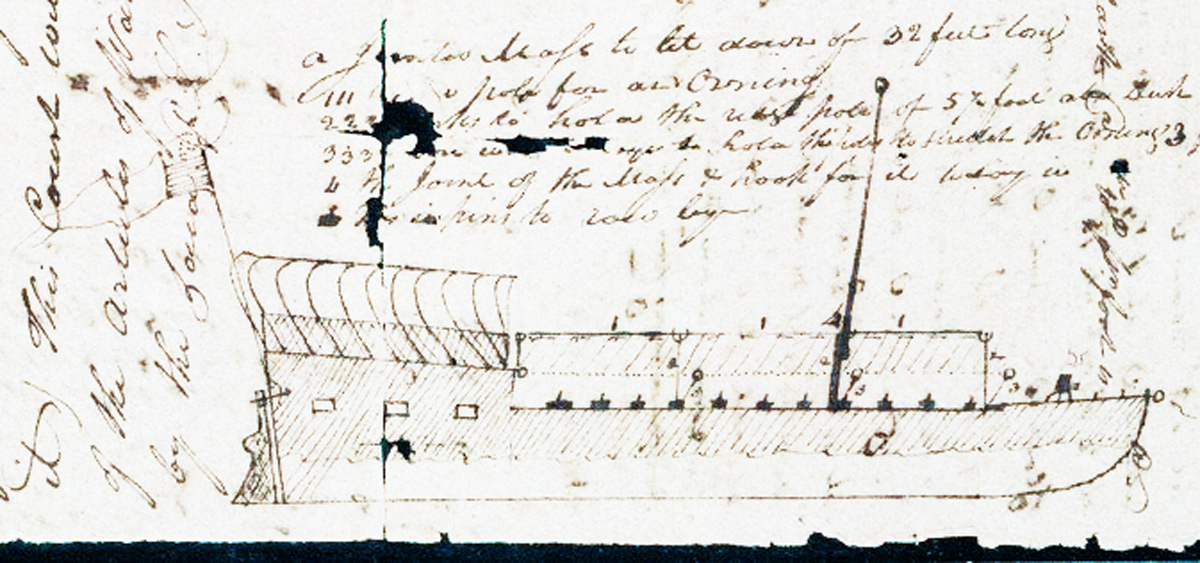After working in Cahokia and St. Louis for nearly two months, Lewis comes to winter camp on the Wood River. On or near this date, Clark draws and labels a side elevation of the barge.
Deer and Bobcat
[Moses] Reed Killed a Deer & wild Cat [ Bobcat]
—William Clark
Lewis Comes to Camp
about Sun Set Capt: Lewis arrived accompanied by Mr. J. Hay & Mr. Jo Hays of Kohokia—
—William Clark
The Barge
a Jointed Mast to let down of 32 feet long
1 1 1 [ridge] poles for an Orning 2 2 2 [for]ks to hold the ridge pole of 5 ½ foot abv Deck 3 3 3 [Base with an eye?] to hold the poles to stretch the Orning 3 foot 4 the Joint of the Mast & hook for it to Lay in T[hole?] is pins to row by
—William Clark (undated)
Weather Diary
Therm. at rise
weather wind Therm. at 4 oClock weather wind River 22 above 0 cloudy &. snow N 16 above 0 fair after snow rise Capt. Lewis arrive from Kahokia.
—Meriwether Lewis and William Clark[1]To assist the reader, the editor of this web page has omitted the date column, merged the “River” columns, and spelled out some abbreviations.
Experience the Lewis and Clark Trail
The Lewis and Clark Trail Experience—our sister site at lewisandclark.travel—connects the world to people and places on the Lewis and Clark Trail.
Plan a trip related to January 30, 1804:

Winter Camp at Wood River (Camp Dubois) is a High Potential Historic Site along the Lewis and Clark National Historic Trail managed by the U.S. National Park Service. The site, near Hartford, Illinois, is managed as Lewis and Clark State Historic Site and is open to the public.
Old Cahokia Courthouse is a High Potential Historic Site along the Lewis and Clark National Historic Trail managed by the U.S. National Park Service. The site is managed by the State of Illinois and is open to the public.
Notes
| ↑1 | To assist the reader, the editor of this web page has omitted the date column, merged the “River” columns, and spelled out some abbreviations. |
|---|



